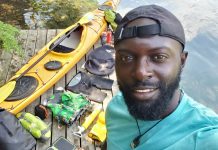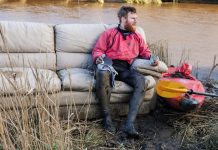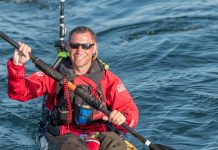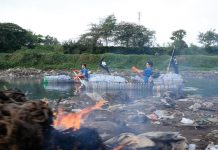Olly Hicks is no stranger to breaking records. Once the youngest person to row solo across the Atlantic and the first to row across the Tasman Sea from Tasmania to New Zealand, he’s currently planning a solo attempt around the bottom of the earth. But his latest expedition, a 1,200-mile kayak journey from Greenland to Scotland, wasn’t about making history—it was about recreating history. In the vein of ethnographer and explorer Thor Heyerdahl, Hicks’ goal was to determine whether the trip that the mythic “Finmen” allegedly made hundreds of years ago could be, in fact, a reality.
Who were the Finmen?
In the late 17th century, there were sightings of the Inuit coming to northern Europe. No one knew where they came from, who they were, or whether they were mythical or magic sea creatures until 1728 when one arrived in Aberdeen, Scotland, with his seal skin kayak and hunting equipment. The mystery was how he got there. We wanted to add fuel to the fire that he’d paddled all the way from Greenland to Scotland.
Why use a modern tandem kayak, rather than a traditional boat?
During our North Sea practices, we’d discovered that a double boat was more seaworthy than a solo kayak, and critically, much faster. For ocean legs, your safety is in your speed—you have to be able to do the crossings quickly to minimize your exposure to bad weather.
I considered doing it in a traditional kayak, but it would be more dangerous. We actually saw a guy in the original gear in the Faroe Islands and it looked to be quite flimsy, with no room for food and you couldn’t sleep in it. It’s possible that the Inuit paddled the route, but unlikely that they went as individuals—more likely as flotillas. I hope someone will try the route in original Inuit gear.
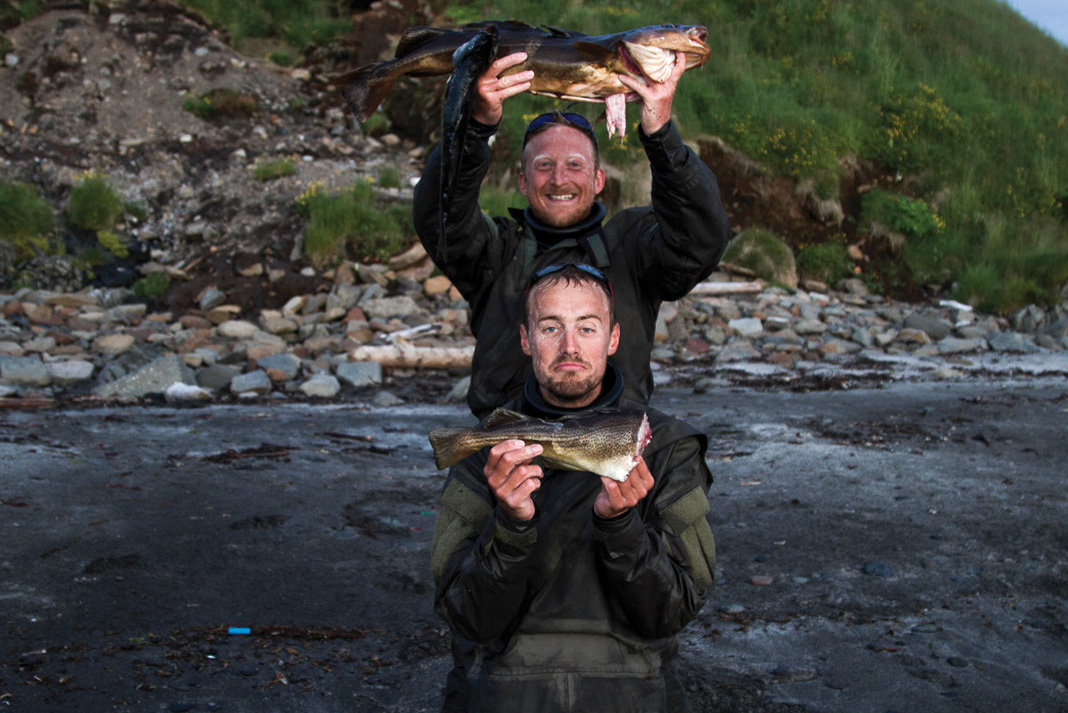
When did your teammate, George Bullard, get involved?
I was initially worried about finding a partner that I gelled with and could trust on a project with such a high-risk profile. George came in at the 11th hour. He picked up skills quickly, so he was an easy choice of teammate.
Most of my expeditions have been solo, so having to manage a teammate and the expectations and different ways of doing things was a new challenge. But there’s not much room for antagonizing one another. We were very mission-focused, just trying to get from point A to point B. On an expedition, life becomes very simple; you’re just paddling all day. You’re either camping or you’re sleeping on the boat, and that’s it—paddle, eat, sleep.
Where did you find yourself living out a boyhood dream?
After we left Iceland, a fishing boat stopped us and said there were hurricane-force winds coming that night. They pleaded for us to go back with them. We phoned our weather teams and the majority opinion was to go back. We spent a week working with the fishermen. Although it was a bit frustrating at the time, it was one of the highlights of the trip—I’ve always wanted to work on a fishing boat.
What song would the DJ be playing if the Devil’s Dance Floor— the 300 miles of open ocean between Iceland and the Faroe Islands—was actually a dance floor?
“Lily the Pink” by [British comedy trio] The Scaffold, which is a suitably loony tune.



